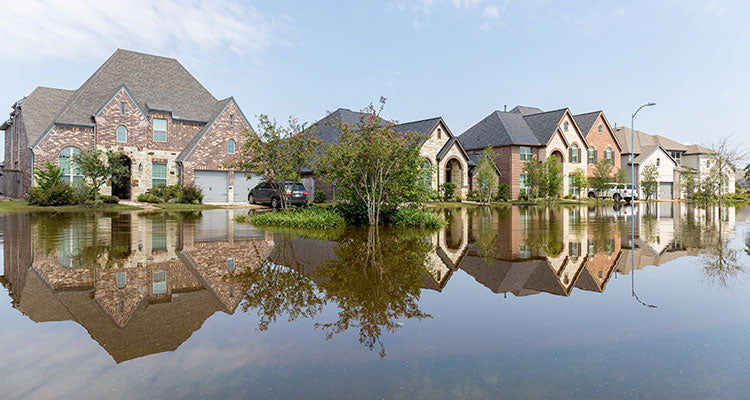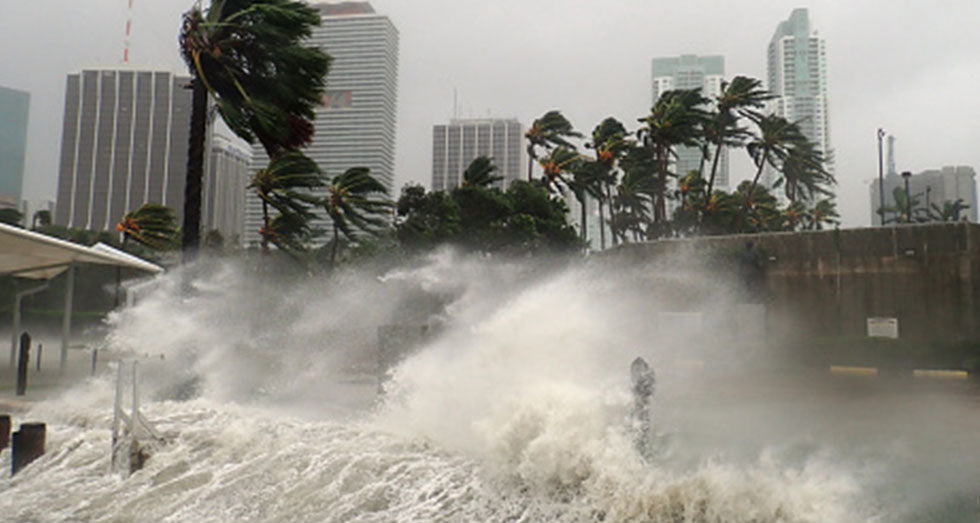Summer hurricane season is here, and as long as a storm isn’t right on your doorstep, there’s still time to prepare. These five installments about hurricane preparedness will remind you of ways to stay safe and secure before, during, and after one of these destructive storms.
Part Two: Prepare Your Home, Pets, and Property
Yesterday we talked about creating a plan for your family and preparing the supplies you would need in case of a hurricane. Today let’s chat about how to prepare your home, your pets, and your property for a hurricane.

Prepare Your Home
- Think ahead! Obtain flood insurance well before a possible need; most policies have a time clause before they go into effect. Learn what all your options are before choosing a coverage plan that works for you and your property.
- Inspect your yard for anything loose that might fly around and cause damage during the high winds of a hurricane. Even a small item, hurled by extremely high winds, can become a dangerous projectile.
- Put tools, lawn furniture, and ornaments securely away inside a sturdy shed, garage, or in your house (piling them in your carport doesn’t count).
- Make your fence as strong and secure as you can. Trim trees, bushes, and dry palm fronds; dispose of the cuttings well before a storm approaches.

Prepare Your Property
- Take “before” pictures of both the inside of your home and the outside for insurance purposes, to show the normal state of things. If there is damage when you return, take “after” pictures from the same vantage points for easy comparison. Also take pictures (even video) of valuable items you would want replaced.
- Make a list of your belongings to go with the pictures and video in case of loss or looting. Make copies of your most important papers, licenses, cards, certificates, policies, etc. to take with you if you must leave.
- Include a list of important phone numbers and addresses, in case something happens to your cell phone.
- Include a family picture and a flash drive or external hard drive containing any computer data you would be devastated to lose.
- Use an online third-party storage service for digital files you can upload from home so there is always a copy available if your own hard drive or other storage devices are ruined.
- If you are hesitant to upload information or photos onto a site like this, consider asking a friend or relative out of town to store an external hard drive for you—the trick with this is keeping it updated if you live very far away. Wrap all these items in plastic for safekeeping.
- Have a supply of cash in small bills available; in the likely case of a power outage, credit cards, debit cards, and checks will not work.
- Make sure your car is in good operating condition. Get any needed repairs done in a timely way so that if you need to evacuate you won’t have to stop and get a new tire or water hose.

Prepare Your Pets
- Replace out which designated shelters can and cannot accept pets (most cannot because of insurance liabilities). A few might accept them if they are leashed or contained.
- If you’re planning to stay with friends or family, check with them ahead of time to find out if Fido and Fluffy are welcome; don’t assume. “Love me, love my dog” might be your attitude, but not everyone is happy to invite your furry friends into their home. Small children may be afraid of your pet, or your hosts may have allergies or other concerns.
- Investigate which animal shelters might be able to take them if you must evacuate, or make plans for your pet to live comfortably and safely outside while staying with friends or relatives.
- Have your pets’ immunizations up to date (required by shelters), and be ready to provide copies of their medical records if asked.
- Have their dishes, leashes, food, meds, litter, pooper-scooper, and familiar toys ready to go if you must evacuate. Include plenty of water for them with your supply.
Some pet owners turn their dogs and cats loose to fend for themselves when a storm threatens, or leave them locked in the house with food and water and hope for the best. Neither is a good choice if you can possibly do otherwise.
Your furry or feathered friends are not wild animals.
They’re dependent upon you for food, water, shelter and comfort, and can easily panic and either destroy your property (my friend’s dog ate the entire end off of their couch when left alone during a thunderstorm), run away, be injured or killed, or bite someone.
Even if you are able to find your pet when you return (which is often impossible), you may not recognize its personality because of the trauma of abandonment, neglect, possible injuries, and fear of the storm it has experienced. Do your best for your pets by finding a responsible pet-sitter for them, arranging for a shelter to take them, or by taking them with you (which would probably be their first choice).
Another note from personal experience: If you are traveling with a cat, use a carrier; cats are much more secure and easy to control if they have their own little cubbyhole to hide in. (They may still yowl in protest, but it’s better than the alternative.)

Prep Your Go-Bag
If you haven’t already done so, pack an emergency bag (bug-out bag) for each family member and have it ready to grab. Include:
- Enough water and food for three days
- A couple of changes of clothing
- Extra socks
- A comfortable pair of shoes
- A rain poncho
- An emergency blanket or emergency sleeping bag
- Some age-appropriate pastime such as a toy, book, puzzle, or game
- Personal toilet articles
- Medicine
- Insect repellent
Depending on the person’s age and ability, they may not be able to carry their own food and water. Though a well-fitting backpack is the best carrier for most people, those who can carry less weight may benefit from a backpack that can also roll if needed.
Still others may prefer duffel bags; Replace the best fit for your supplies and comfort. Include a card in each bag that has the person’s name, address, your out-of-town contact’s phone number, and your own phone number on it.
You may want to bring a lightweight sleeping bag for each person, and familiar pillows are comforting if there’s room for them.
Obtain storm shutters or plywood pieces to fit your windows and have them cut and ready to install with appropriate fasteners (screws and nails). Be familiar with the installation process (or have an easy-to follow diagram or instruction sheet) so you aren’t scrambling with unfamiliar items when a storm is approaching.
The better prepared you are, the less fear and distress you’ll experience. Even if things get scary when the wind blows, you’ll know you’ve done your best.
More Posts in This Series:
Part One: Advance Planning and Preparation
Part Three: Under a Hurricane Watch Part Four: Under a Hurricane Warning

